|
Welcome to 2024. Last year was difficult for many people for a host of reasons. The world of animal welfare seems to have been turned upside down. This shift began in 2020, but 2023 seems to have been the worst year yet for people who advocate to help animals and people who need help. I personally attribute a lot of this to the pandemic not just because life became harder for many people but because some self-proclaimed leaders in the animal welfare movement seemed to have lost sight of what we all seek - saving the lives of more companion animals and making the world a better place for those animals. Ideas that probably should have been just tossed around after sharing too much alcohol and then discarded as absurd suddenly became operating models for organizations that have a lot of money, influence and power. Those organizations encouraged or provided political cover for animal shelters to:
All of that is the bad news. The good news is that you can make a difference by changing your perspective, something I have had to do myself. How? For me, the key is to focus not on the global issues, issues in a single country or state or issues related to national organizations run amok over which we have no influence, but by trying to make things a little bit better right in our own backyards. I can't use the phrase Dorothy shared in a famous movie because it is subject to copyright, but you get the idea. Focus on the area you consider home. Adopt from a local shelter if you can. Adopting an animal is a 10 to 15 year commitment not to be taken lightly and I know people can only adopt as many animals as they can care for. Please just consider a shelter animal from your community or your region the next time you plan to bring a new animal into your life. Most either were someone's beloved companion and all have the capacity to be just that.
Foster a local animal if you can. Fostering is just as important as adopting. Animals rarely behave in a shelter the way they behave in a home. Fostering an animal from your community allows the shelter or rescue group learn more about the animal's true personality to place that animal faster. For people worried about getting too attached, my hope is you would see your home as a stepping stone to the animal's new future. A step made possible through your generosity. Many rescues are foster-based and the number of animals helped are limited more by the lack of foster homes than by money. Cross-post to be exposure for shelter or rescue animals. I can't count the number of times I have seen people in the shelter and rescue community be critical of people who share about animals in need on social media platforms. They act as if your time is of no value unless you adopt, foster or volunteer. Placing animals is about marketing and the ability to place animals needing homes if limited by the number of people who know about a particular animal. It can sometimes take thousands of shares and comments to get an animal placed. Cross-posting is an important part of that. If someone faults you for now doing more, just laugh. You are helping in your own way. Volunteer locally to help shelter or rescue animals. Even if you can't adopt or foster, most shelters and rescues rely heavily on volunteers. Tasks can relate directly to helping animals like walking dogs, playing with dogs or cats, reading to dogs or cats or transporting dogs or cats to a rescue group or veterinary appointment. You can also help indirectly by helping to market animals, helping admin a social media page, collecting supplies or doing laundry. I spend a lot of time making flyers, doing small fundraisers and making videos in which animals appear to talk or set to music. Speak out to seek better for animals in your community. Most tax-funded animal shelters end the lives of healthy and treatable animals. People are paying for that. If you want better of the elected officials who are stewards of tax-dollars, tell them that. If you learn of neglect or cruelty at your local animal shelter, speak out and demand better. Only when enough people make it obvious to elected officials that issues related to companion animals are important will they listen and either modify their own behavior or be voted out of office. Donate locally to help animals. I know many people who donate to large national groups that claim to advocate for animal welfare while either doing exactly the opposite or while using donations to pay elaborate salaries or administrative costs. I call them the alphabet soup imposters because most are best known by their initials and all are self-perpetuating money making operations. Please don't give them your hard earned money. If you want to donate to help animals, do some research to find an organization in your area where your dollars will do the most good. Donations to municipalities are tax deductible - consider donating to your local animal shelter to cover the adoption fee for a shelter animal to get him or her placed faster or to help pay for extraordinary veterinary care. Also consider donating to help a rescue group in your area. Rescues rely entirely on the goodwill of the public to be able to pay for veterinary care for the animals they help. Animal rescues - please look in your own backyard first. Not a day goes by when I don't learn of someone in animal rescue who has decided to walk away from helping animals completely or who is so angry with the public that it is affecting their physical, mental and emotional healthy. I encourage anyone running a rescue group, regardless of size, to consider what they hope to accomplish using the resources they have. You cannot help 1) all the animals on the planet; or 2) all the animals in north America; or 3) all the animals in the United States; or 4) all the animals in your state. It is my hope that you will look to your own area first when it comes to helping animals in need. Almost every community has animals at risk of having their lives ended at local animal shelters not because there is anything "wrong" with them, but because the way most shelters are managed. Please look to your local shelter first before reacting to all of the social media content about all the animals who need to be placed. That is just too overwhelming and it is up to people in each community to advocate for change in their own areas. Do what you can, knowing it is enough. It is easy to get overwhelmed trying to help animals in need. Something comes across a news feed or someone tags us in a post and we want to do all we can to help. It can be too much on some days for me and I know it is the same for others. When you feel like you just can't take anymore, walk away. Take care of yourself first. There will still be animals in need when you are in a better place and are better prepared to develop a plan for how you can help, if you even can. You alone cannot save all the animals in your community and it in the end, that is not your responsibility. Every small thing you do matters and you will likely never know how the most simple of actions sets other actions in motion. Welcome to 2024. We can all do something to make it better.
2 Comments
I''m having a bad day. It relates to no kill principles, aggression in dogs, volunteering and a dog named Lulu. My head is not particularly clear, but I will share anyway so I can try to move on. I have written many times about the phrase "no kill" and what it means to me and the people in my circles. No kill is an animal sheltering philosophy in which healthy and treatable animals are not destroyed for space, for convenience or just because that is what has historically been done. Shelters which euthanize animals to alleviate suffering can still be no kill because they are doing what is ethical and right; no one would argue that animals should be kept alive if they are in pain or are so terribly injured that they simply cannot be saved. Shelters which destroy dogs who are genuinely dangerous for legal reasons related to public safety can also be no kill shelters. It is not reasonable to expect shelters to allow all dogs to be adopted out into our communities if those dogs may ultimately present a public safety risk and either injure or kill someone. I've dealt with legal cases about dog bite fatality attacks and they are both gruesome and preventable. Determining which dogs are actually dangerous is the tricky part. Although numerous dogs are destroyed in our nation’s animal shelters for behavioral issues which are categorized in a number of ways (fear, aggression, public safety and “high arousal”) experts have opined that shelter evaluations of dogs are no better than a coin toss and the number of dogs who are genuinely dangerous make up less than 1 percent of all shelter intake. Shelters are nothing at all like the homes or lives dogs may have known outside the shelter environment, even if that life was not good. As was stated in an article published by the National Canine Research Council: Shelter evaluations may tell us as much or more about the effect of the shelter as they do about the individual dogs. Shelters are noisy, alien environments, filled with strange smells, unfamiliar people, and dogs they may hear, but not see. We should not be surprised that some dogs may... behave differently when confined in a shelter, with its barrage of stressors that the dog cannot control, than they will in the safe, secure, predictable environment of a home, cared for by people with whom they are able to form positive attachments. I have known for a very long time that the shelter in the city where I work destroys large numbers of dogs for behavior. Some months are better than others. I get the reports from the city each month and I see the columns on the reports which set forth the identification number of each dog destroyed, the perceived breed, the age estimate and other details. The majority of the dogs are young. I, and members of my no kill advocacy group, have tried to get the city help on this issue. We've helped pay for experts to train the shelter staff. We've tried to connect the senior shelter staff with people in other places who can provide guidance and make recommendations on how to keep more dogs alive. There is only so much we can do because we lack any real influence to make things change for the better. Even though I know about dogs being destroyed, I decided the time had come to volunteer at the shelter. I refused to volunteer for years during the period when large numbers of healthy and treatable animals were destroyed. My position was that I would no sooner volunteer at a kill shelter than I would work the production line at a chicken processing plant. Because the city has made a lot of progress - and because it is the city's position that it has not destroyed any dogs for space or convenience for four years - I decided the time had come to give it a shot. I have never given any value to the opinion of my many critics over the years who have professed that I am not allowed to have an opinion about what happens at the shelter unless I volunteer there (as if volunteering is the Golden Ticket to free speech). I can absolutely have an opinion about how tax dollars are spent, But I was spending less time on political advocacy locally so I told myself that I could spend some time volunteering instead. I volunteered at the shelter for a few months and admit that I enjoyed it even though my advocacy has marked me as the enemy in the minds of some. It was nice to take my lunch break, put on some jeans and and old pair of tennis shoes and go walk dogs, engage with dogs and feed them special treats. I did a fundraiser to help the shelter buy some great slip leads and leashes. I created posters to help promote donation of toys and treats. I began making short promotional videos for some dogs to help market them with the public. One day a couple of weeks ago I met a singer/songwriter friend of mine at the shelter as she performed "shelter serenades" while I took some video footage. I fully admit that my time at the shelter was not a big deal in terms of the overall need. My hour or so a week was not a huge contribution, but I wanted to do something and I felt like I was helping in some way even though I was not welcome at the shelter by many of the other volunteers. It did not last.
On Friday I met a dog named Lulu. I had seem images of her on social media used to help promote her on Valentine's Day. One was of her wearing beads and a headband with hearts on it; I remember thinking to myself that not many dogs would tolerate having that much "stuff" put on them and then actually sit still for photographs. I knew from contacts that Lulu had been showing signs of stress inside the shelter. On the day I met her, a volunteer had taken LuLu outside for a walk. I talked to Lulu, touched her, took some photos and recorded her walking nicely on a leash so I could make a short promotional video to help her get adopted. She was happy. She was calm. I learned later that afternoon that she had lunged at her kennel door when meeting a potential adopter and had tried to bite a volunteer. I finished the video of her and shared it with others on Monday, hoping someone would see it and decide to adopt her or foster her. I was sure that if she could be introduced to someone not inside the shelter, but outside, she may have a chance to be placed. I've seen dogs who were incredibly stressed inside shelters change completely once they are no longer confined in that environment. One woman did offer to foster her. But it did not matter. I found out today that Lulu was killed yesterday. Some of the words used to explain the decision were, "she had become unsafe" and "we were worried about her potential for harming people." I appreciate the fact that some dogs are broken and are unsafe. I do not think we can "save them all." I do think we can save almost all of them and that it takes a commitment to try everything before we give up. We need to look for every opportunity to keep the dogs who are struggling the most alive. A foster home. Housing the dog outside in a kennel for a few hours a day to get them out of the shelter building itself. Working with a contract behaviorist. I have a hard time reconciling the image of the happy dog wearing beads and my memories of the dog walking calmly on a leash with a decision to end her life three days later. Grief makes no sense. I will grieve for the dog named Lulu whom I just met not only because she is gone but because she represents so many other dogs just like her. I'm sorry we failed you, Lulu. You were beautiful. You were smart. And this image of you is forever seared in my memory. I’m a sucker for a good animal book. I have a library of go-to book resources, some of which are tabbed, highlighted and worn much like old high school or college textbooks (for those of you old enough to have used actual books in school). These are the more serious books I use as reference materials and to which I refer regularly in my animal welfare advocacy. Then there are what I call the feel-good books. I don’t mean feel-good in a Hollywood kind of way where nothing bad ever happens and the good guys always win. I mean feel-good from an animal welfare advocacy standpoint. These are books which share empowering and inspirational stories of people in the weeds of animal welfare, doing unseen great deeds for which all of us should be grateful. They are the books which have the power to compel each of us to evaluate what we are doing to help animals and to "be the change" we seek by getting personally involved in helping animals. A few weeks back, one of my reference authors (Kim Kavin of “The Dog Merchants”) led me to a new author about whom I did not know before. There had been an issue with difficulty getting a shelter in South Carolina to release a dog to a rescue group following Hurricane Michael and I was asked what I knew about the shelter operation. As it turns out, the shelter has nothing to write home about, as mom used to say. (The live release rate at the shelter is around 60% which means that animals have about a 50/50 chance of making it out of the shelter alive). Cara Sue Achterberg, however, does have something to write home about and she did just that in her enchanting new book about her experiences as an animal foster - “Another Good Dog.” I have written before about people who foster animals for animal shelters and rescue groups. I thought it was a big deal when I learned that my brother and sister-in-law had fostered more than 100 dogs in a period of over 8 years. Each time I've visited my brother’s house I've been amazed at how difficult it must be, and how much time it must take, to foster 5 or 6 dogs at any given time in addition to caring for and loving your own pets. Cara takes the concept of fostering to a whole new level, having fostered more than 50 dogs in a 2-year period and then writing a book about her experiences. No one is keeping score, of course, but the sheer number of animals flowing from shelters, to rescue groups, to Cara’s home and then on to new lives is just mind boggling to me. This is a very organized process in terms of the logistics of the rescue group getting dogs out of shelters and transporting them to foster homes, but the outcome is anything but certain. Foster families who take in rescue animals never really know what will happen when a new animal enters their home and never know how long their visitor will stay. It is a fascinating process to me which I think far too few people know about. Fostering animals for shelters and rescue groups quite literally keeps them alive. While many communities have become more progressive regarding how tax-funded animal shelters operate, healthy and treatable animals are still destroyed in our nation’s shelters for no good reason than the fact that they are in the wrong place at the wrong time. It is easy to tell ourselves that dogs are destroyed by the millions in our nation’s shelters either because something is wrong with them or because there is no other way to function. The truth is that with very few exceptions, all the healthy and treatable dogs in our shelters are good dogs and they just need our help to start new lives. Animals rarely behave like themselves in shelter environments which can be scary, loud, foreign places which are nothing at all like the homes and lives they once knew. Animals placed in foster homes are being prepared to become someone’s beloved companion through socialization and structure. When they are in foster homes, we help them decompress, help them get the veterinary care they need and we learn about their personalities so that we can help people learn more about who they truly are and not just how they behaved in the shelter. But on to Cara’s wonderful book. I grew up in a reading household and have always found great enjoyment in books in general. When I learn of a new animal book like Cara’s, there really is no better place to be than inside my head as I go along for the ride and learn about the life of another person. Lots of people write animal welfare or animal-oriented books. It takes a true talent to take us on a journey in a book and that is exactly what Cara has done in “Another Good Dog.” The book is not just about the dogs themselves; it is about Cara as a person, about what led her to feel compelled to foster dogs, about how fostering became a family affair (which includes her husband and children) and about how fostering has since become a way of life. I laughed. I cried. I wished Cara had kept some of the dogs she fostered even thought I understand why she did not. I found myself personally invested in the story and while Cara and I have never met, I am honored to call her both a friend and a hero. When I write blogs about books like Cara’s, I don’t want to spoil the journey for anyone. When you read her book you'll see for yourself what I saw as I turned the pages and wondered what in the world was going to happen next. The book will appeal to anyone who loves animals even if they have never fostered animals. If you have been thinking about fostering animals to save lives, this book may help you take a leap of faith and give it a try. Cara explains why it is that the heartbreak of letting a foster animal go to a new home is far outweighed by the need for fosters to keep animals alive. She helps us understand that no one is really ready to foster and you just do it and do your best, knowing that alive and cared for always beats the alternative (which in many parts of the country means death). She helps us understand that while fostering helps animals in need by preparing them to be someone’s beloved pet, each animal we help also helps to mold and shape us and to become better people in the process. One of my favorite passages from the book is this: In the beginning, fostering for us was about having fun with a new dog, trying each one out as if it could be our own. Each adoption was a decision for me – should we keep this one? And each time when the decision was made to let the dog leave, I felt sad, guilty event. Somewhere along the line, though, I’d stopped thinking of the dogs as mine. It didn’t hurt less, but it was easier. I didn’t imagine any of them staying. I had an important job here. It was to prepare the dogs for their new home. If I did my job right and OPH’s (Operation Paws for Homes) adoption coordinator team did their job right, there was a very good chance that the next home these dogs moved to would be their last. So when each dog left it wasn’t because I decided not to keep it, it was because I’d helped it find its home, and now could save another dog. Cara was gracious enough to agree to a Q&A session so I could share some information with my followers which is not contained in the book and help people learn more about her and what she does. If you have other questions for Cara about her book, you can contact her through her website. Q: Early on in your book, you talk about a foster kit you get which includes a number of items which I found fascinating: vitamins, probiotics, coconut oil and cranberry extract. Do you still use the same items for your fosters? If so, would you recommend them to anyone who adopts a dog from an animal shelter? A: Because so many shelter dogs have a spotty health history at best, we try to bolster their immune system and help them fight off potential health issues with vitamins and probiotics. The cranberry extract is given to female dogs to try to prevent (or treat) urinary tract infections that can be common in dogs who have to hold their pee for a long time on transport runs that can be as long as twelve or more hours. The coconut oil is not only a natural wormer, it’s good for lots of things like their coat. And yup, we still use the same stuff and I always recommend the probiotics to adopters. Q: We hear all the time about shelters with high kill rates which make it incredibly difficult for rescue groups to pull animals. Even though there are rescues out there that are willing to pull dogs that are heart worm positive, may have some behavioral issues, are older or may have come from a really bad situation, it seems like some regressive shelters would rather destroy the dogs than release them to rescues. Have you ever encountered this attitude? A: I do think it’s rare. I haven’t encountered it with the shelters we have established partnerships with, but this past fall I did run into it for the first time with a shelter in South Carolina that took in evacuated hurricane dogs. They put up quite a fight, insisting that we shouldn’t pull a dog because they had labeled him heart worm positive and dog-aggressive. Because I’d met the dog in person while on my tour, I argued that we should still pull him and offered to foster him myself. As it turns out, he was heart worm negative and not the least bit aggressive toward dogs, people, or even cats! Quite the opposite actually. I think the vast majority of shelters are working hard to save every dog they can, but as I learned this fall, occasionally there are shelter workers who become jaded or frustrated or maybe just burnt out, and find it easier to euthanize than go the great lengths it sometimes takes to save a dog. Q: A lot of people don't foster animals because they work full time away from home and are worried about leaving a foster animal alone for long periods of time. What would you say to those people to convince them that fostering is still a good idea? A: Even though I work from home, I still crate my foster dogs for part of the day. I do this because I know that the vast majority of adopters will have to crate them while they work. Most of the people who foster with OPH (the rescue I work with) work full-time away from their house. People who work outside of their homes are actually the perfect people to foster most dogs. Q: What do you think about the concept of Sleepover fostering where people foster either for a weekend or for a couple of nights? A: I think that any time you can get an animal out of the shelter for any period of time, it’s going to benefit that animal. It’s also a great way to ‘try out’ fostering a dog you aren’t sure about and to help shelter workers assess a dog’s temperament in a home setting. Q: In your book you talk about the fact that you may have a puppy addiction. Do you still? A: Oh, yes. Puppies are my crack. Even worse, I love to foster pregnant dogs. Fostering puppies is much more time consuming than fostering dogs, plus it’s very messy. We quarantine our puppies who are not fully vaccinated, which means for at least 8 days, the puppies stay indoors in a restricted area. That means there’s a lot of potty detail. But all of that pales when you hold it up against the joy of being with puppies. No one can be unhappy in the presence of a puppy. Q: It seems as though fostering has become a way of life for you, as it has for many of my other contacts. Do you envision yourself doing this forever? A: Well, I hope I won’t be doing this forever. I hope we will solve this absolutely solvable problem our country has of euthanizing adoptable dogs. But until we do, yes, I will continue to rescue. Having met so many good dogs whose only crime was landing in an overcrowded shelter and knowing how many more are still dying, there’s no way I could stop. Cara Sue Achterberg describes herself as a writer, blogger, and “occasional cowgirl” who lives on a farm in South Central, Pennsylvania. Her first novel, I'm Not Her, was a national bestseller. She has since written two additional fiction books (Girls' Weekend and Practicing Normal) which have had huge success in addition to an award-winning book called, Live Intentionally: 65 Challenges for a Healthier, Happier Life. Cara fosters dogs for Operation Paws For Homes, a nonprofit all-breed rescue organization, and writes a blog about her experiences.
As of the date of this blog, Cara has fostered 136 dogs. She is currently fostering two adult dogs and three six-week-old puppies (in addition to her two personal dogs) 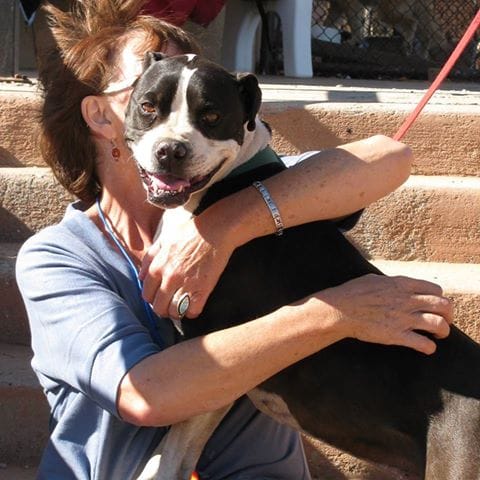 Most dogs have happy and healthy homes and their humans love them, treat them with kindness and consider them their best of friends. But there are many cases where dogs don't have a home and may end up in a shelter, are strays or are being abused by their owners.. These are the dogs most in need of help in your community, and for them just doing a little can mean a lot. Consider Adoption The best thing you can do for a dog is to adopt it. While that won't work for everyone, there is no doubt that adopting a dog and giving it a permanent home can't be beaten. But consider this. You may not be able to adopt a dog because of your situation, where you live, your work schedule, or other issues, but do you know of someone who might? A friend or family member, a friend of a friend, an acquaintance that may want or need a companion, and all it may take is an idea with a phone call to get the ball rolling and potentially make a very happy occasion for a dog and its new owner. Volunteer Sure, nothing beats adopting a dog, but every pet shelter needs volunteers to help manage their dog population. And this doesn't have to be a full-time project, either. You could go in for an hour a day, or every other day, once per week and clean kennels. You could go in and walk the dogs, you could help during feeding time, you can help giving medications, and there are myriad other ways to be involved as a volunteer. Just doing something like that may make the difference in a dog that is happy to see you, and will then show that love to any prospective owner who is looking to adopt. 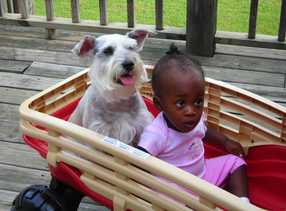 Be A Sponsor If you don't have time to volunteer, consider being a sponsor. Sponsoring means you'll provide a particular dog with food, medicine or special needs for as long as it stays in a shelter. Even though you may not be directly involved with your dog, being a sponsor gives it a chance to thrive and be taken care of until a potential owner shows up. Doing that might make all the difference in the world. Foster care A better way to be a sponsor is to actually foster care a dog until a permanent home is found. It will live with you until such time as an owner is found, and in that way, it won't take up space at a shelter where the space might be needed more. You may be able to do this for only a limited amount of time, like say during a holiday when you'll be at home, or on vacation from work. Even doing that frees up space and acclimates a dog to a human setting, which can only be a positive thing for being permanently adopted down the road. Volunteer Other Skills Sure, we touched on volunteering your pet skills, but how about skills that are not pet related? A shelter may need maintenance or minor repair work, and by doing that, you'll allow them to spend more money on the care of the dogs. Although it is an indirect way of volunteering, it serves the same purpose and can be just as satisfying no matter what. Keep Your Eyes and Ears Open Stray dogs can pop up anywhere, and they need to be off the streets and in a shelter where they can be helped. If you see a dog roaming the streets without any apparent ownership, call your local Humane Society or shelter and let them know. Trust me, you'll be doing that stray dog a favor by doing so. Also, and everyone hates to admit this, but there are some bad dog owners out there. Any dog that is restrained out in the open in all types of weather needs help. A call to the Humane Society or shelter will get a someone out to the property where the dog is, and the situation can then be ascertained by a professional. It's Up To You No one wants to see a dog abused, penned up in a shelter or stuck in a kennel. By doing any one of the things listed, you can make a difference for the dogs in your community, and it just may be the best feel good thing you've ever done, for you and a dog. About the Author Mary Nielsen is a passionate dog lover, blogger, and part-time music teacher. She founded MySweetPuppy.net to share her ups and downs of being a pet parent to a bunch of adorable mutts. When she is not playing with them or teaching, you can find her experimenting in the kitchen. (images courtesy of Mindi Price, Delores Francois and Becky Lyn Tegze)
My advocacy involves a lot of keyboarding. That isn't all I do, but it's what takes up most of my volunteer time. I have pages and blogs here which cover topics I think are important to most animal loving Americans. And even to people who don't consider themselves "animal people" but who are interested in how municipalities function related to animals. The aspect of my advocacy I enjoy most is creating slideshows and videos for specific nonprofits or on general topics which can be used by any nonprofit. I work in the legal field doing a job that calls for a lot of investigative work and analysis and really no creativity at all. It helps me to have a creative outlet to help people who help animals while honoring my own animals and human family members who have moved on. Probably my longest "client" relationship is with National Mill Dog Rescue based in Peyton, Colorado. I can still recall the very first conversation I ever had with Theresa Strader many years ago while we were working on "Believe in Something" using a Fisher song by the same name. I have never been to the National Mill Dog Rescue kennel and have often thought how wonderful it would be to quit my day job and just become a full time volunteer there. It's just an ongoing joke, of course. Aubrie Kavanaugh - Poop Removal Specialist. Some of my closest contacts in the rescue community are the people who help manage this nonprofit; they work incredibly hard to not only help dogs but to help educate the public. There are no days off. I dare say that their advocacy is not just part of what they do. It is part of who they are. My latest project for National Mill Dog Rescue came at a perfect time for me. We had just had our dog euthanized under terrible circumstances and I was a disaster. When Michele Burchfield asked me to do a project using a Little River Band song in advance of their August 14th concert at Lily's Haven, I was thankful for the distraction from my grief. It gave me something positive to do. As I searched for and saved the images I needed to fit the vibe I was going for, I couldn't help but to smile at all those precious faces, both canine and human. Putting the project together helped heal some of the broken places in my heart. I consider this type of advocacy people helping people helping animals. Thanks so very much to Little River Band for allowing us to use this song. I am sure it won't be the last time we use one of the band's songs. I look forward to more projects in the future using music which belongs to Little River Band, Fisher and Martin Page, my "go-to" music sources. If you are anywhere near Peyton, Colorado, I hope you'll go to the concert. I'm sure it will be a wonderful combination of terrific music and just great people. If you can't go, I hope you enjoy "Love Is" and that you will learn more about the life-saving work of this incredible organization. I do believe theirs is a Higher Calling. And I am simply happy to be associated with such devoted and passionate advocates. |
AuthorI am an animal welfare advocate. My goal is to help people understand some basic issues related to companion animals in America. Awareness leads to education leads to action leads to change. Archives
July 2024
Categories
All
image courtesy of Terrah Johnson
|


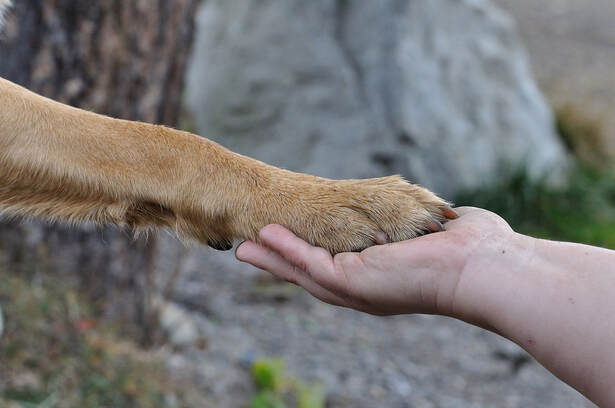

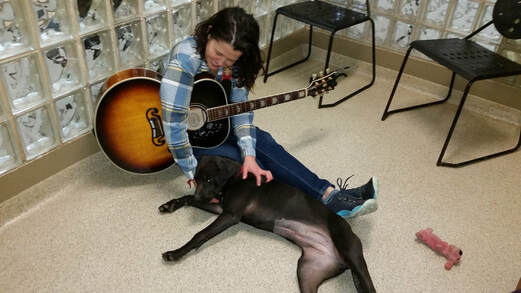
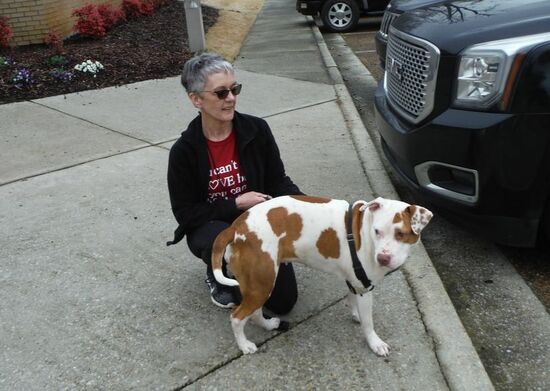

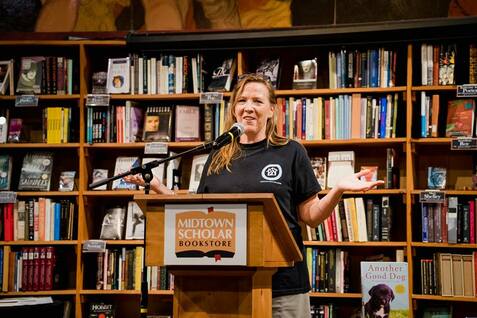
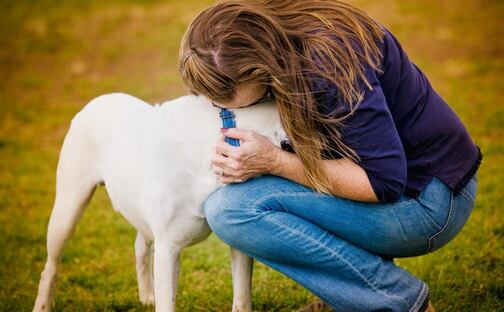
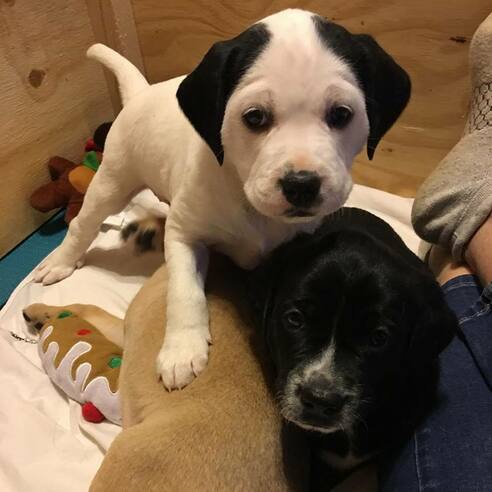
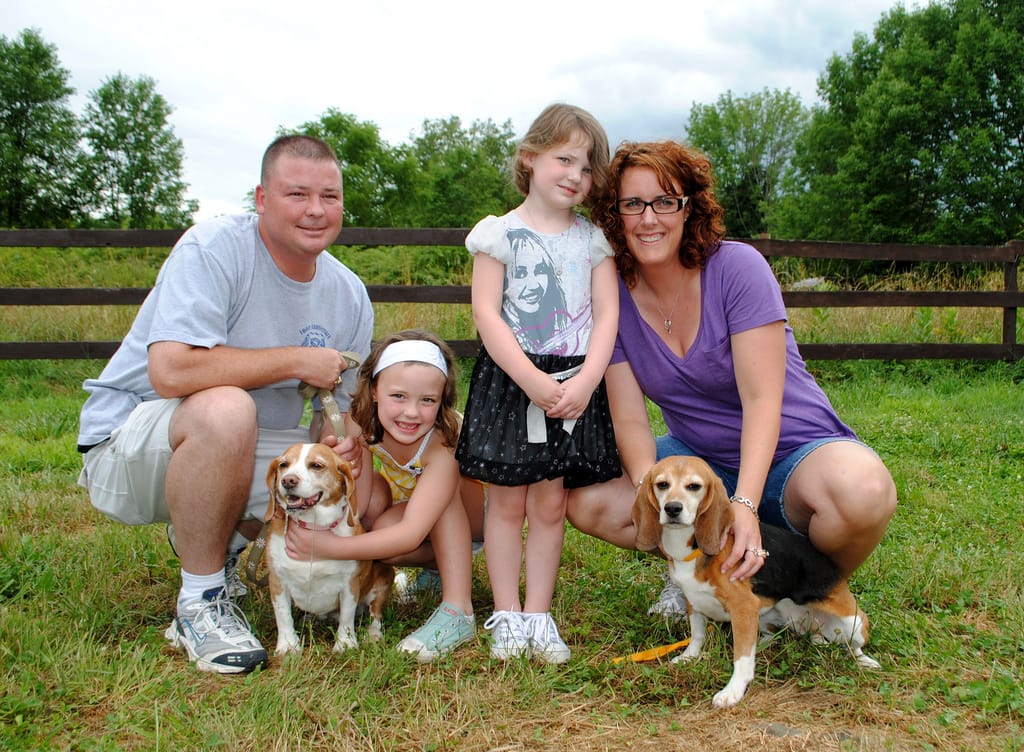
 RSS Feed
RSS Feed